For many years, there was only one way to get floors with the look of genuine hardwood—and that was by having real hardwood floors installed. But today, homeowners have so many options for achieving this aesthetic that it can be overwhelming trying to decide which wood-look floor is the best choice for their home. In addition to real hardwood, the look of wood can be found in luxury vinyl plank, wood laminate, engineered hardwood, and even ceramic tile products. And each material has its pros and cons. A great way to decide the best wood-look flooring for your situation is by pitting just two products against each other and taking a closer look at the nuanced differences between them. In this article, we’ll be comparing laminate flooring against solid hardwood flooring in four critical aspects that all flooring shoppers should consider.
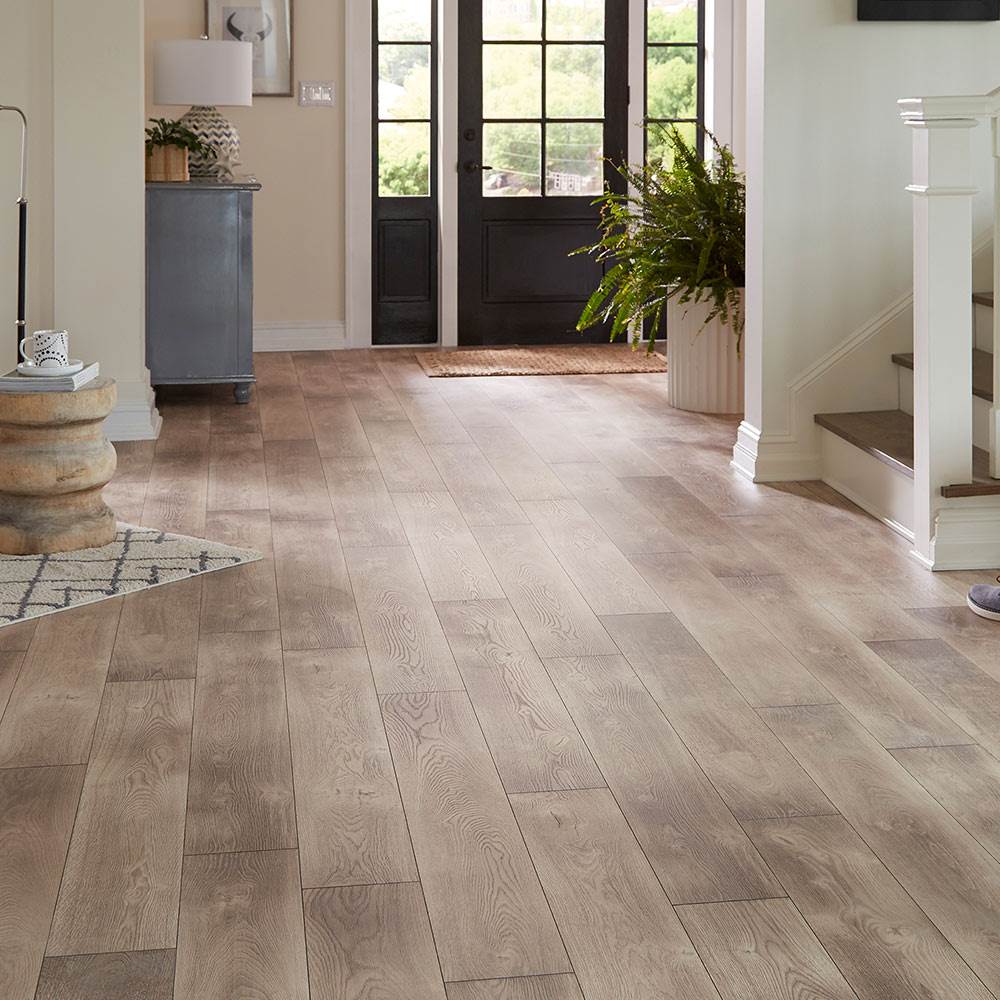
When shopping for new flooring, achieving a particular look or style is the top priority for most customers. And if you’re reading a comparison of two different products whose main similarity is that they share the look of real wood, it’s safe to assume that you’d want to know everything possible about how they compare visually. So, in the battle of laminate vs hardwood floors, how exactly do looks factor in? Let’s find out.
At first glance, most laminate flooring is visually indistinguishable from a real hardwood floor, and for good reason. Laminate products at Empire are crafted with a top layer that consists of a photorealistic wood grain image protected by a scratch-resistant wear layer. In short, the visible surface of every laminate flooring plank is essentially a photo of a real plank of wood. Close inspection will usually reveal laminate’s secret, but in regular use, most laminate floors will be indistinguishable from real wood to the untrained eye.
Of course, the only thing more realistic than a picture-perfect copy of the real thing is…the real thing. Since every plank of hardwood flooring is hewn as one piece from a solid hunk of lumber, its appearance is as genuine as it gets. And this applies to engineered hardwood as well since the top layer of every plank of that material is also made from a solid piece of wood.
Now, most people’s first instinct is to assume that real wood will automatically be the better choice when it comes to aesthetics, but that’s not always the case. When taking a critical look at the appearance of laminate vs hardwood flooring, we can see that each has its pros and its cons.
Although wood laminate flooring can artificially create a visually perfect wood image on its surface, its main downside is that the grain variations are limited per product because the photorealistic image gets reused. That is, in an entire floor’s worth of wood laminate planks, there may be only a dozen or so unique grain patterns. While not usually an issue for the vast majority of customers who choose wood laminate, those who are particular about their aesthetics might find it bothersome.
In contrast, real wood floors will have an infinite variation in their grain patterns—no two real hardwood planks will look exactly the same. But even that comes with its potential downsides. As every plank comes from a piece of solid wood, the natural variations within the lumber can sometimes be not aesthetically pleasing. It’s not uncommon to encounter knots, burls, or other irregularities. Extreme examples are discarded during the manufacturing process, but it’s possible that what passes the brand’s standards might not be up to yours. Overall, however, the unique look of a genuine wood floor is one of the product’s best features.
Conclusion: When it comes to getting the look of wood, it’s difficult to beat the products whose surfaces are crafted from real wood. Real hardwood flooring is the winner in this category, though laminate flooring puts up a good fight. And for many customers, the slight ding in authentic visuals is an acceptable tradeoff for the many benefits of wood laminate floors. What are those benefits, you ask? Read on!
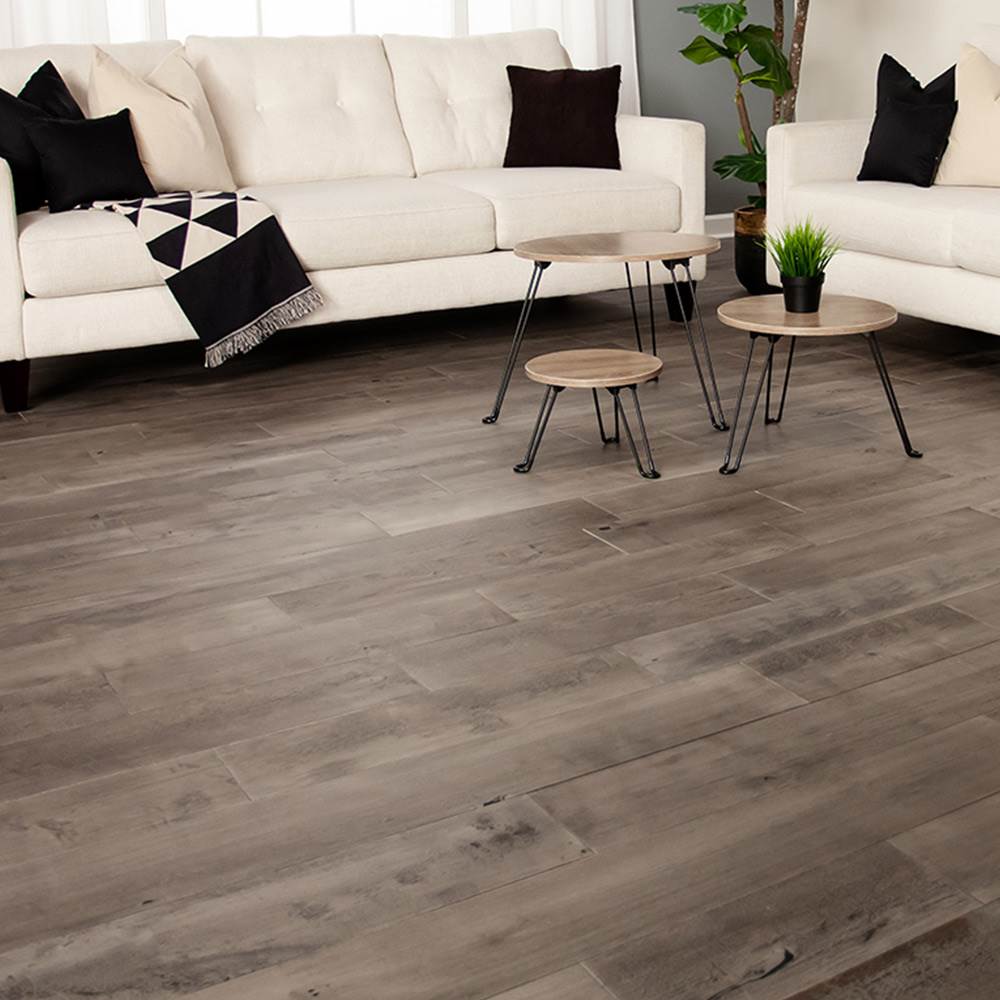
CARE:
Low maintenance is one of the main selling points of wood laminate flooring. With its dense composite core and scratch-resistant wear layer, most laminate floor products from Empire are “set it and forget it” type material. Once installed, laminate floors will rarely need any attention beyond your typical cleaning schedule. As long as you regularly sweep up any abrasive dirt or debris and use care when moving heavy furniture, wood laminate floors should continue looking great through many years of typical use. As an added benefit, most laminate products at Empire are water-resistant—and there are even some fully waterproof laminate floors. This protection against the harmful effects of water has proven invaluable to many customers.
Real hardwood floors are a little trickier. While day-to-day care isn’t all that different—just the regular sweeping and light mopping—there are a few things to be aware of. The major area where real wood floors fall short of laminate is in dealing with moisture, as no solid hardwood flooring products offer water resistance. That means that even the slightest spills, if not cleaned up quickly, can end up damaging your wood floors. It’s for this reason that Empire does not recommend installing hardwood in kitchens, bathrooms, or anywhere there is the potential for moisture collection.
There is also an expectation that real hardwood floors will need to be refinished at certain long-term intervals in order to keep them looking their best. Usually recommended around every ten years or so, this process involves sanding off the topcoat, stain, and a very thin layer of the actual wood surface; a new stain and sealant is then applied to the entire floor. Refinishing hardwood floors introduces hassles and additional costs that you don’t get with laminate, but it does offer some serious advantages that we’ll look at in the next section.
Conclusion: When considering just the maintenance aspect, laminate is the clear winner. It’s the better material for kitchens, bathrooms, or any room where you’ll expect your floors to encounter any exposure to wetness.
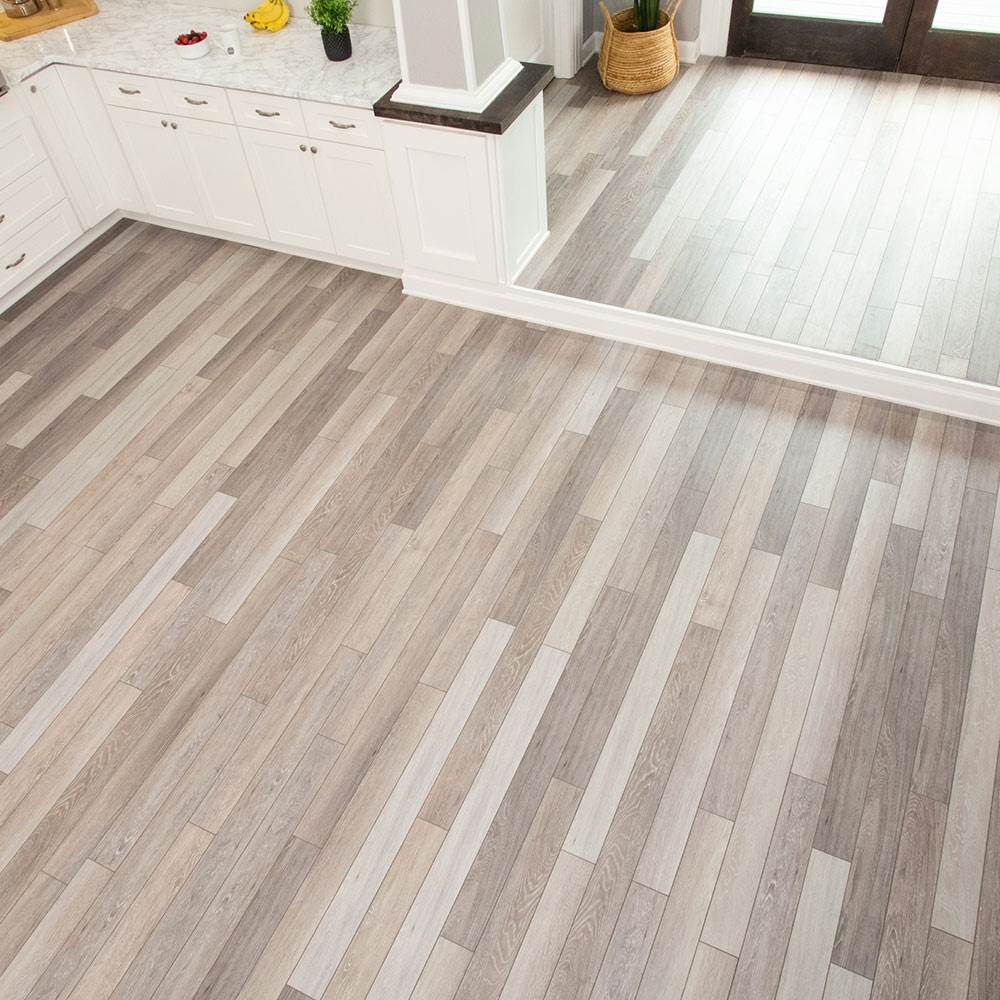
LONGEVITY:
Durability is a major factor to consider in the laminate vs hardwood flooring showdown, especially if you’re planning on staying in your home for the foreseeable future. New floors are one of the most significant renovation projects a homeowner can have completed. Updates like repainting walls, changing window treatments, or planting new greenery can be done with little planning and might happen every few years. But when you have new floors installed, it’s usually with the hopes that they’ll last a very long time. And while part of your floors’ longevity will come down to how well you care for them and how much foot traffic they experience, the material you choose will also be a significant factor.
And this is where hardwood flooring really gets a chance to shine in comparison to wood laminate. Real hardwood flooring is typically considered to be one of the longest-lasting flooring materials a homeowner can choose. Its solid construction lends the material a certain durability and removes any chance of delaminating that can happen to laminate or vinyl flooring. While its surface is still as prone to knicks and scratches as laminate, those blemishes can often be easily repaired and touched up on a wood floor. In comparison, a significant chip in a laminate floor plank will reveal the fiberboard core and will usually not be possible to repair—requiring instead an entire new plank to be put in.
Another benefit that hardwood has over laminate flooring is the way it wears its scars. Most customers don’t mind the patina that a hardwood floor will develop over years of use. In fact, many people actually look forward to seeing their hardwood floors age, with every scratch or scuff adding a unique bit of character to their home. And if those accumulated scratches get to be too much, the ability to fully refinish a hardwood floor becomes one of the material’s greatest assets—and a major perk when it comes time to sell your house.
Now, this is not to suggest that wood laminate flooring isn’t capable of lasting the long haul. Wood laminate products at Empire are covered by some of the industry’s best warranties, and with integrated features like scratch-resistant wear layers and Aqua Defense waterproofing, they’ll have no problem enduring life in a typical household. With proper care, it’s not out of the question for wood laminate floors to last upwards of 20 years. However, unlike real wood floors, a laminate floor cannot be refinished when it starts to look worn.
Conclusion: In a typical household, you can expect real hardwood flooring to last much longer vs. laminate flooring. Both materials should give you many years of use, but real wood’s ability to be repaired or refinished, combined with how it wears its scars, makes it the better choice for anyone looking to get the longest life possible out of their floors.
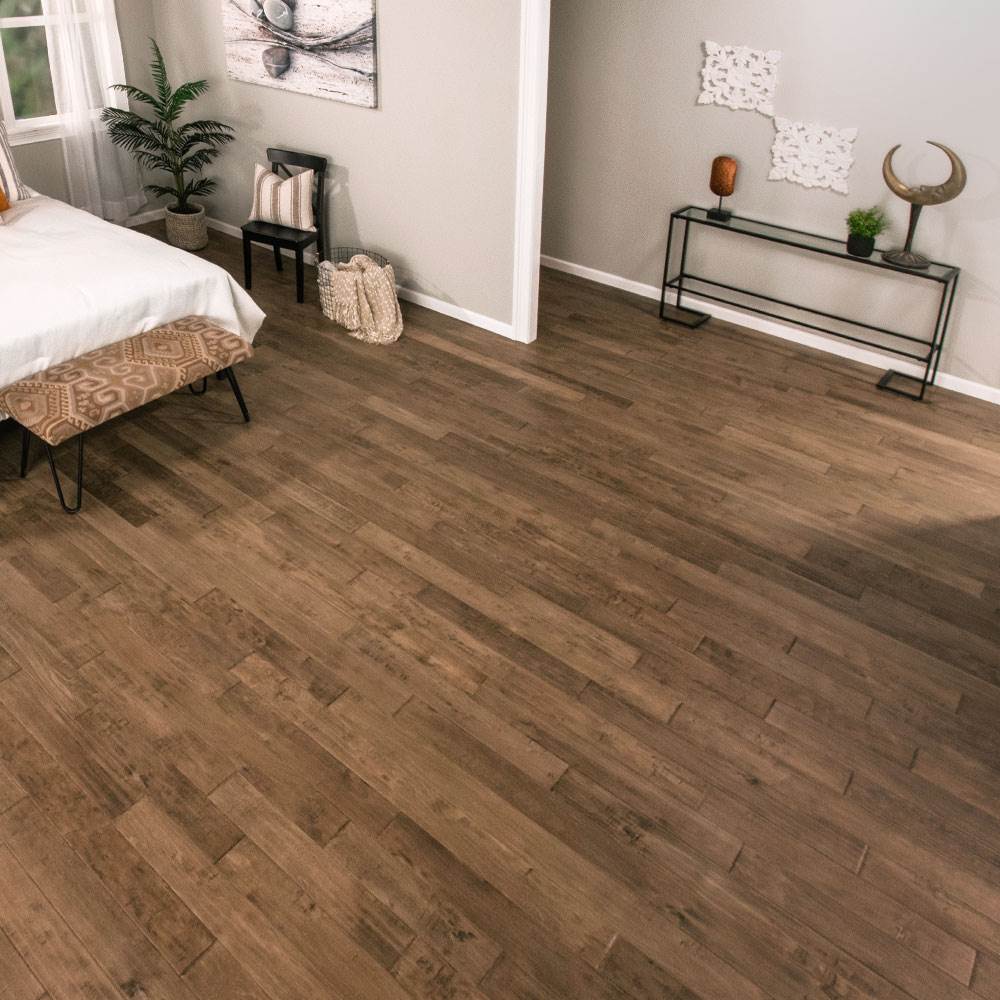
Lastly, but perhaps most importantly, is the expected cost of laminate vs hardwood flooring. By and large, a laminate wood floor will almost always be significantly more affordable than a genuine hardwood floor. While the most basic hardwood might cost less than the most advanced laminate products, when comparing equal grades of each product (say, the most affordable laminate vs the most affordable hardwood floor), the laminate floor installation tend to be less expensive.
However, for many homeowners, the price premium of real wood is worth the benefits. Those who have found their “forever home” are often attracted to the idea of having floors that last for a long time, aging with the home and becoming almost an heirloom in the process. Many people feel that there is a certain character in real wood flooring that simply can’t be recreated by synthetic products, and the extra cost is worth it. Plus, there is the practical value of real wood’s ability to be refinished. When the time comes, whether due to accumulated wear or simply the need for a stylistic refresh, refinishing a hardwood floor can be much more affordable than completely replacing the floor—even if you replaced it with a low-cost material like sheet vinyl flooring.
And finally, it’s commonly accepted that a real hardwood floor can add value to your home. When it comes time to sell your home, buyers are more likely to react positively to old hardwood floors than to old laminate floors.
Conclusion: We’re going to call this one a draw because it is the one aspect that is greatly dependent on your personal needs and preferences. Based simply on the initial investment, laminate flooring will hands-down be the better value. But if you plan to spend decades in your current home, or are already thinking about maximizing your resale value, hardwood floors can be the better long-term investment.
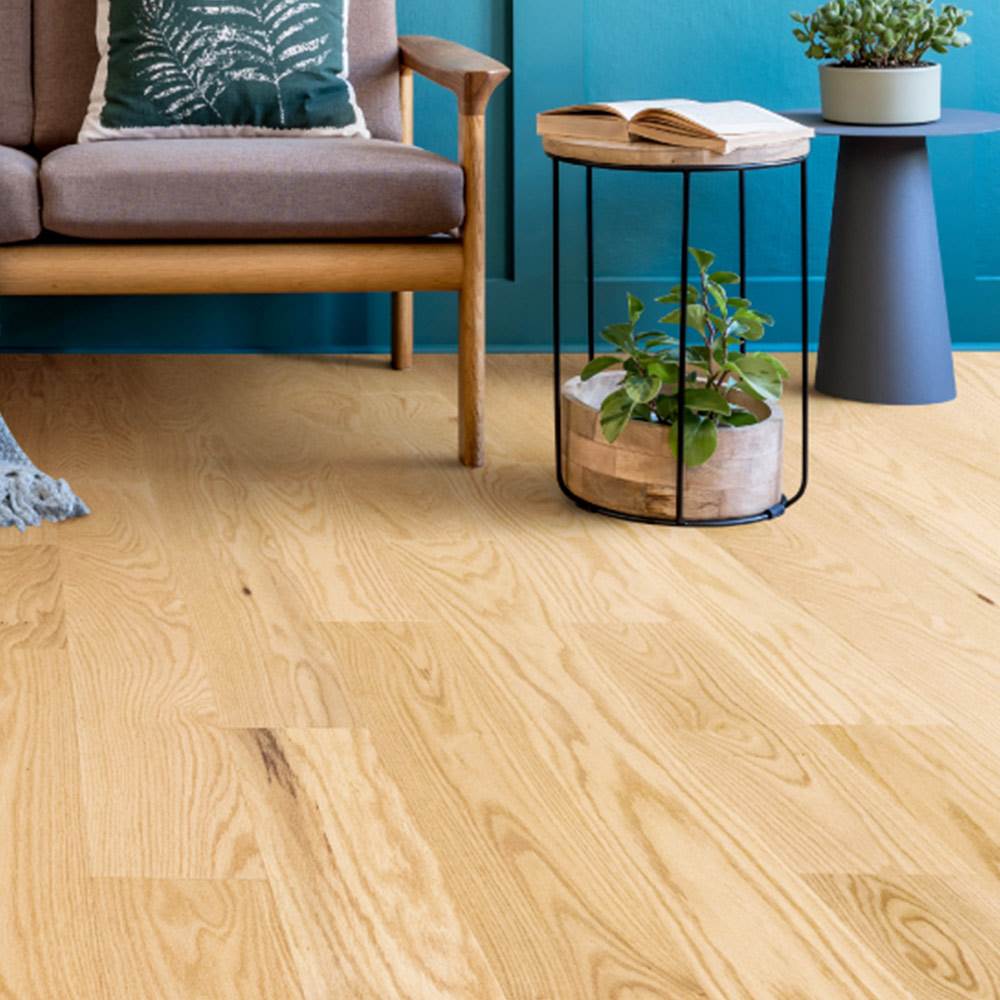
So which material wins overall? Like just about any major decision in life, there’s no clear-cut winner when comparing laminate to hardwood flooring. If your initial budget is a major factor, you prize versatility and easy maintenance, or you know you may want to completely change your floors out in just a few years, wood laminate will be the better choice. But if you’ve settled into your forever home and are willing to make a bigger upfront investment for floors that could last a lifetime while aging gracefully, hardwood floors might be exactly what you need.
Still having trouble deciding between laminate and hardwood flooring? We’re here to help take the guesswork out of getting new floors. When you Schedule a FREE In-Home Consultation, a flooring pro will walk you through every facet of new flooring, from helping you find the right product to making sure your home’s current subfloors are suitable for having new floors installed. Give us a call or click any of the “Schedule Now” buttons on this page to set up your appointment today.
Get the latest updates delivered to your inbox.